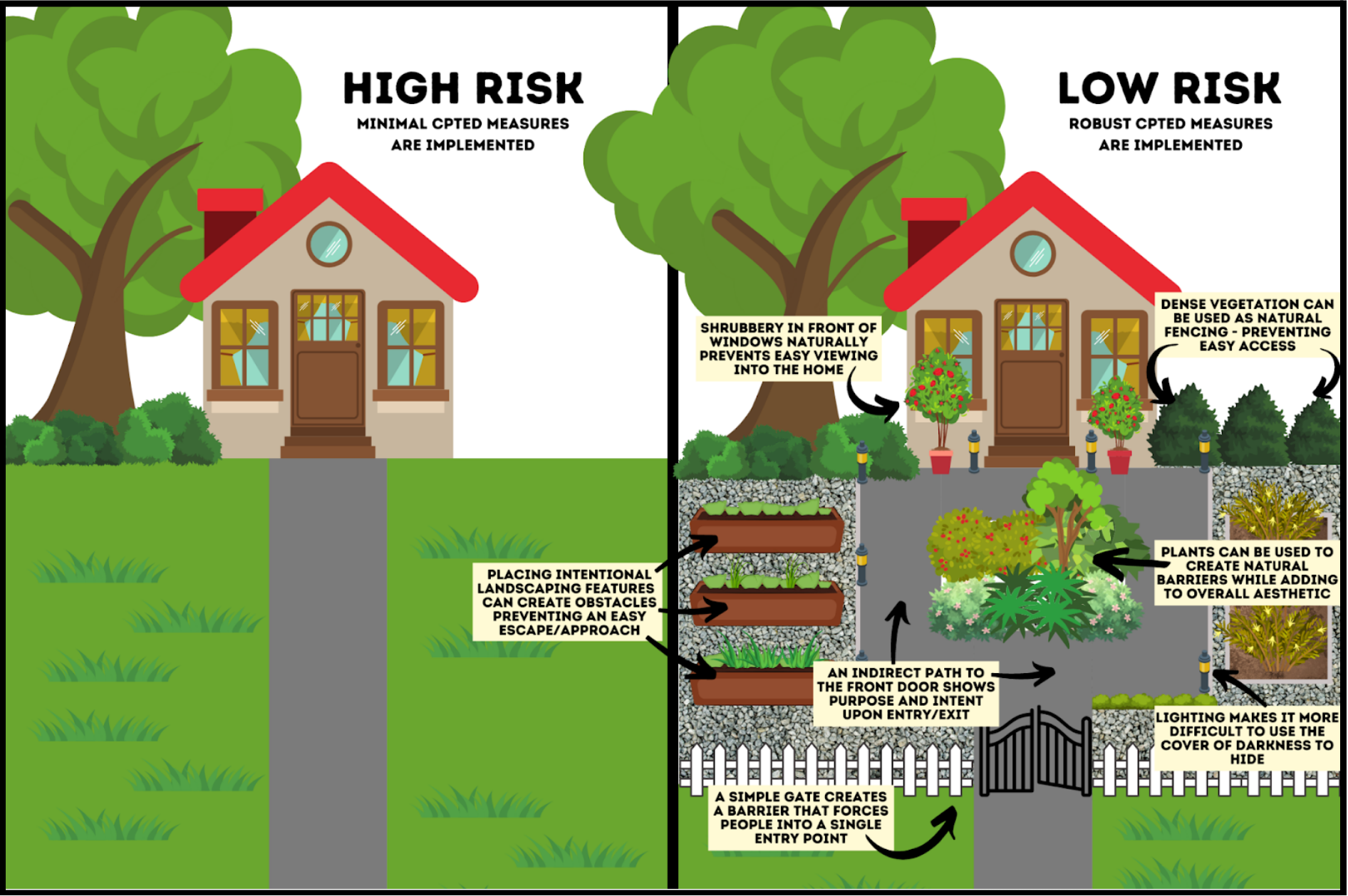
Firearm Injury, Art, and Crime Prevention Through Environmental Design (CPTED)
By Mary C. Byron, BA.
The NEA Lab’s approach to firearm injury prevention using public art explores practices that are both novel and cutting-edge but also comparable to concepts that have been around for more than half a century such as Crime Prevention Through Environmental Design (CPTED). Similar to the Busy Streets Theory that posits that unkempt, vacant neighborhood lots negatively impact the mental well-being of the surrounding community and may lead to higher levels of community violence, CPTED is a proactive approach to deterring criminal behavior through the design of the built environment that positively influences the way communities interact with it. This strategy emphasizes the ability of the physical environment to influence a potential offender’s decisions before criminal acts are committed, subsequently decreasing instances of community violence and enhancing the quality of life of community members.
CPTED is not a new framework. Urbanist and author Jane Jacobs brought the power of surveillance, or “eye on the streets” as a crime deterrent to the attention of urban planners in her 1961 novel The Death and Life of Great American Cities. The formal use of CPTED terminology began in the 1970s through the works of criminologist C. Ray Jeffery and architect Oscar Newman. The CPTED framework is driven by principles that serve to deter crime by manipulating environmental factors to reduce opportunities for crime and fostering a sense of ownership among users of community space. Examples of CPTED are laid out in the diagram below.

Image credit to Rise Stockton (2023). https://risestockton.org/crime-prevention [Alt-text A diagram showcasing various CPTED design features around a house including flower, vegetable, herb, and rock gardens]
The NEA Lab is exploring how to foster ownership and place-based connections through the production of community-engaged public art projects such as murals.
While not typically highlighted as CPTED features, the collaborative effort of creating a mural often instills a collective sense of responsibility and guardianship over the area. The placement of murals can build community connection and foster positive social interactions among users of the space. Murals can also facilitate natural surveillance as they attract people’s attention and eyes on the street. A well-designed and well-maintained mural often communicates that a space is cared for and under constant watch, discouraging potential criminal behavior and interpersonal violence including firearm injury.
Therefore, the commissioning of new murals is potentially an effective way to implement CPTED principles in urban spaces, that simultaneously beautify the built environment while increasing safety and preventing firearm violence. The NEA Research Lab is investigating to what extent and how mural artworks reduce firearm-related crimes by improving social and emotional well-being in the specific Detroit communities that we work with.